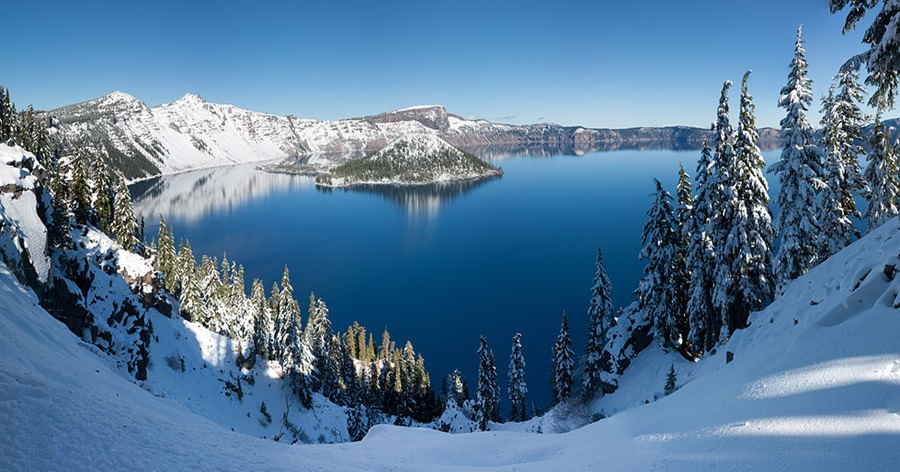

Crater Lake, Oregon is a stunning and breathtaking sight to see. Located in the Cascade Mountains of Southern Oregon, Crater Lake is the deepest lake in the United States and the seventh deepest in the world. The lake itself was formed around 7,700 years ago when the volcano, Mount Mazama, erupted and collapsed. The lake has no rivers or streams flowing into or out of it and is fed solely by rain and snowfall, making it incredibly clear and pristine. The lake itself is 594 metre deep, making it the deepest in the United States and the tenth deepest in the world. The water of Crater Lake is some of the clearest and bluest in the world. This is due to the fact that the lake is fed solely by rain and snowfall and has no rivers or streams flowing in or out of it. Additionally, the lake is surrounded by dense forests and high cliffs, preventing any sediment from entering the lake, which further contributes to its unparalleled clarity and beauty.
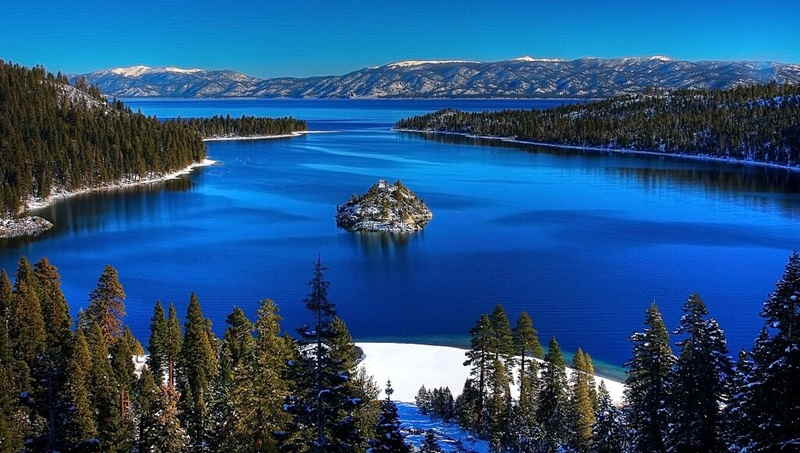
Lake Tahoe is a beautiful and popular destination located on the border between Nevada and California. It is the second deepest alpine lake in the United States, with a depth of 501 m. The lake is 35 km long and 19 km wide, with a surface area of 490 square km. The stunning blue clarity of the lake is one of its most impressive features. The clarity of the water is due to its high elevation of 6,225 feet and its natural filtering of silt and sediment from the surrounding mountains. The water is so clear that visibility is a whopping 70 feet, allowing visitors to view the depths of the lake.
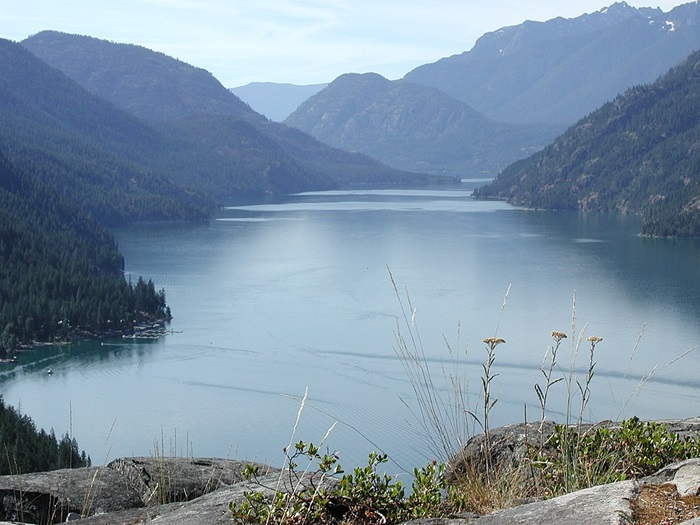
Lake Chelan is located in the north-central part of Washington state, and is one of the deepest lakes in the United States. It is the third-deepest lake in the country, with a maximum depth of 453 m. The lake is over 81 km long. Lake Chelan is one of the most popular tourist destinations in the state of Washington. The lake is surrounded by the North Cascades mountain range and is known for its crystal clear blue waters and stunning mountain views. The lake is home to many species of fish, including rainbow trout, kokanee, and smallmouth bass. Swimming, fishing, boating, and camping are all popular activities at the lake. The lake is fed by the Stehekin River, which originates from the glaciers of the North Cascades.

Lake Superior is the largest of the five Great Lakes of North America and the largest freshwater lake in the world by surface area. Located on the border of Michigan, Wisconsin, and Minnesota, it has a surface area of 82100 square km, a maximum depth of 406 m, and an average depth of 147 m. The deepest part of Lake Superior can be found off the coast of Michigan. Lake Superior is also very large and often referred to as a sea due to its size. It has over 400 islands and 2,900 miles of shoreline, making it one of the most beautiful and serene places to visit. The lake also has an impressive history. It was formed by glacial activity around 10,000 years ago and has been an important part of the region’s culture and history ever since.
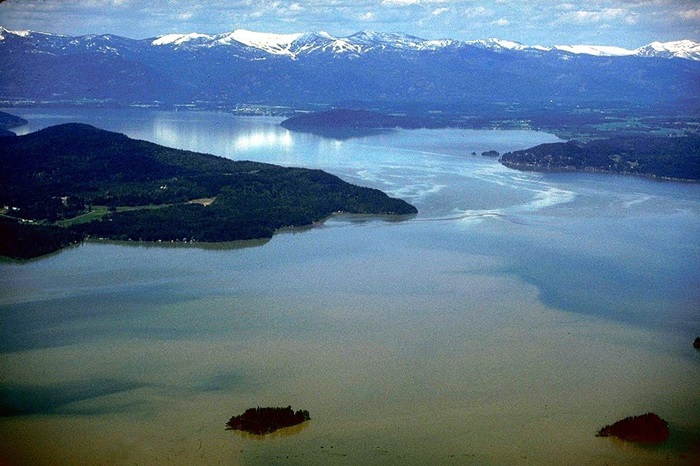
Lake Pend Oreille is a large, deep lake located in the northern region of Idaho, US. It is the largest lake in Idaho and the fifth deepest lake in the United States, reaching a depth of 351 m. It is 69 km long and has over 179 km of shoreline. The lake was formed over 10,000 years ago during the last glacial period, when a large glacier carved out the lake basin. Since then, the lake has been a popular destination for fishing, swimming, boating and camping. The lake's deep blue waters and surrounding mountains provide a picturesque backdrop to any of these activities. Lake Pend Oreille has a wide variety of fish species. The most popular among anglers include kokanee salmon, bull trout, lake trout, cutthroat trout and whitefish. The lake is also home to various species of wildlife, such as bald eagles, ospreys, great blue herons, mule deer and black bears. The lake's depth makes it a great spot for scuba diving and exploring underwater caves.
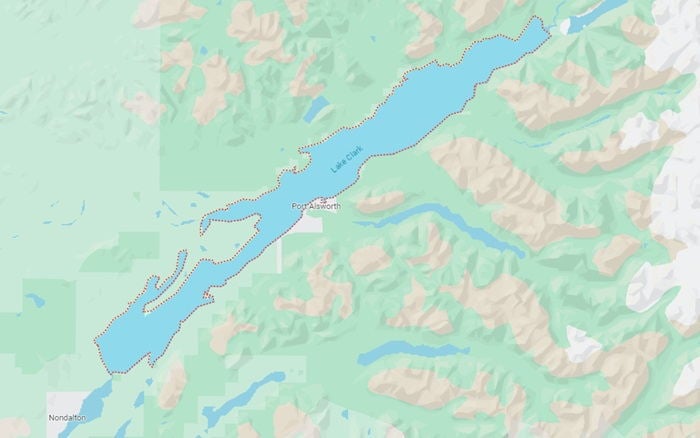
Lake Clark is 322 metre deep, making it one of the deepest lakes in the state of Alaska. Situated in the Chigmit Mountains, a subrange of the Aleutian Range, Lake Clark is the fourth largest lake in Alaska. The lake itself is roughly 69 km long and 8 km wide, and is fed by multiple rivers and streams. Its depths are fed by glacial streams and runoff from the surrounding mountains, which gives the lake its deep blue hue. The lake is also home to a variety of fish, including sockeye salmon, rainbow trout, arctic char, and northern pike. Lake Clark is surrounded by a stunning landscape of alpine mountains, rolling hills, and lush forests. The lake is also the source of the Kvichak River, which flows for over 70 miles before draining into Bristol Bay.
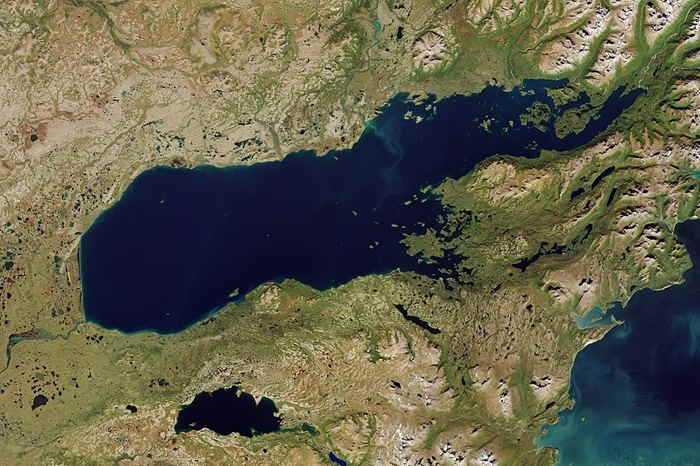
Lake Iliamna is the largest lake in Alaska and the eighth largest in the United States, covering an expansive area of over 2622 square km. Nestled in the southwestern part of the state, this freshwater lake is renowned for its breathtaking natural beauty and ecological significance. It is situated within the Bristol Bay watershed and serves as a vital component of the region's diverse ecosystem. The lake has a depth of 301 metre, making it the seventh deepest lake in the United States.
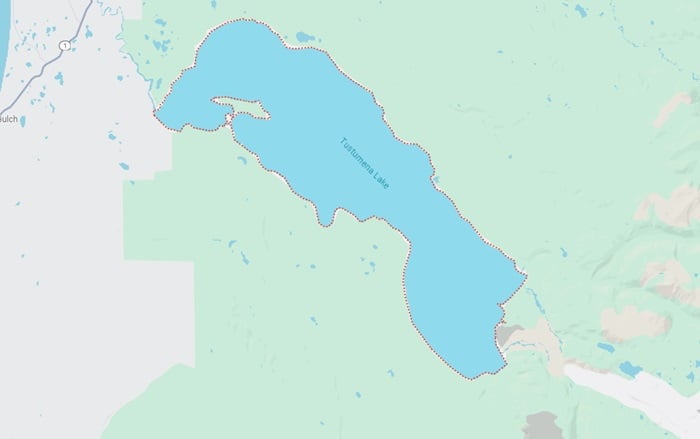
Lake Tustumena is a pristine freshwater lake located on the Kenai Peninsula in Alaska, USA. Covering an area of approximately 297 square km, it is the state's eigth-largest lake. Lake Tustumena has a maximum depth of 290 metre. Surrounded by lush forests and rolling hills, the lake is a haven for outdoor enthusiasts, offering opportunities for fishing, boating, and wildlife observation. Known for its crystal-clear waters, Lake Tustumena supports a diverse ecosystem, including salmon, trout, and a variety of bird species.

Lake Michigan is the second largest of the five Great Lakes located in the United States. It is bordered by four states, Illinois, Indiana, Wisconsin, and Michigan. The lake measures 494 km in length and 190 km in width and has a maximum depth of 281 metre. Lake Michigan has a varied and rich history. Native Americans lived along its shores and used the lake for transportation, fishing, and other activities. In the late 1700s, the first non-native settlers arrived and established trading posts and villages along the lake’s coasts. The lake was also used by the U.S. Navy during the War of 1812. The lake’s shoreline is bordered by the cities of Chicago and Milwaukee, as well as numerous other towns, villages, and rural communities. The lake is a major source of fresh water and recreation for the states.

Lake Ontario, one of North America's Great Lakes, is a vast freshwater expanse situated between the United States and Canada. With a surface area of approximately 18970 square km, it ranks as the smallest among the Great Lakes. Bordered by New York to the south and Ontario to the north, Lake Ontario is a vital part of the St. Lawrence River system. The lake has a maximum depth of 244 metre.